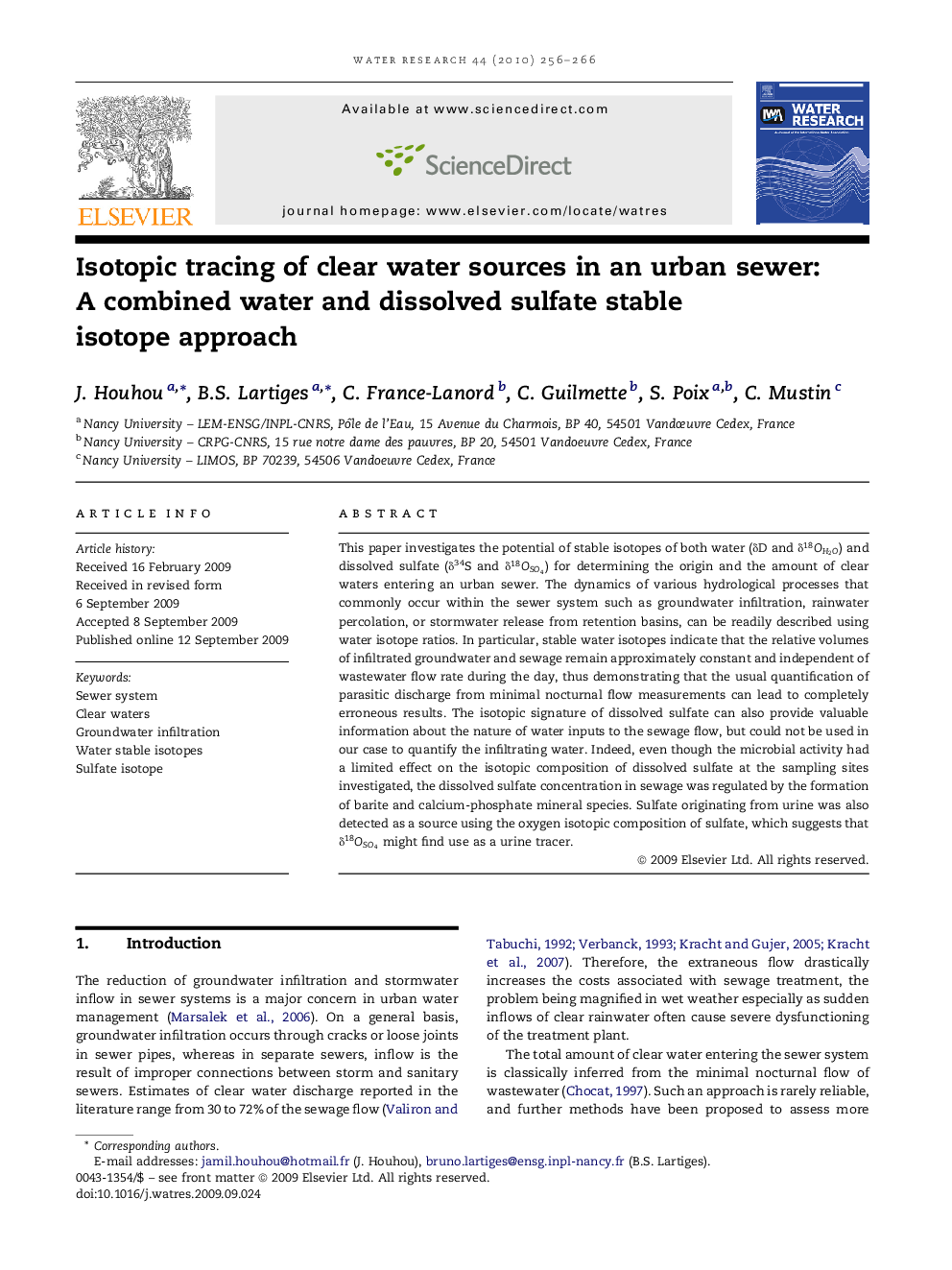| Article ID | Journal | Published Year | Pages | File Type |
|---|---|---|---|---|
| 6368215 | Water Research | 2010 | 11 Pages |
Abstract
This paper investigates the potential of stable isotopes of both water (δD and δOH2O18) and dissolved sulfate (δ34S and δOSO418) for determining the origin and the amount of clear waters entering an urban sewer. The dynamics of various hydrological processes that commonly occur within the sewer system such as groundwater infiltration, rainwater percolation, or stormwater release from retention basins, can be readily described using water isotope ratios. In particular, stable water isotopes indicate that the relative volumes of infiltrated groundwater and sewage remain approximately constant and independent of wastewater flow rate during the day, thus demonstrating that the usual quantification of parasitic discharge from minimal nocturnal flow measurements can lead to completely erroneous results. The isotopic signature of dissolved sulfate can also provide valuable information about the nature of water inputs to the sewage flow, but could not be used in our case to quantify the infiltrating water. Indeed, even though the microbial activity had a limited effect on the isotopic composition of dissolved sulfate at the sampling sites investigated, the dissolved sulfate concentration in sewage was regulated by the formation of barite and calcium-phosphate mineral species. Sulfate originating from urine was also detected as a source using the oxygen isotopic composition of sulfate, which suggests that δOSO418 might find use as a urine tracer.
Keywords
Related Topics
Physical Sciences and Engineering
Earth and Planetary Sciences
Earth-Surface Processes
Authors
J. Houhou, B.S. Lartiges, C. France-Lanord, C. Guilmette, S. Poix, C. Mustin,
